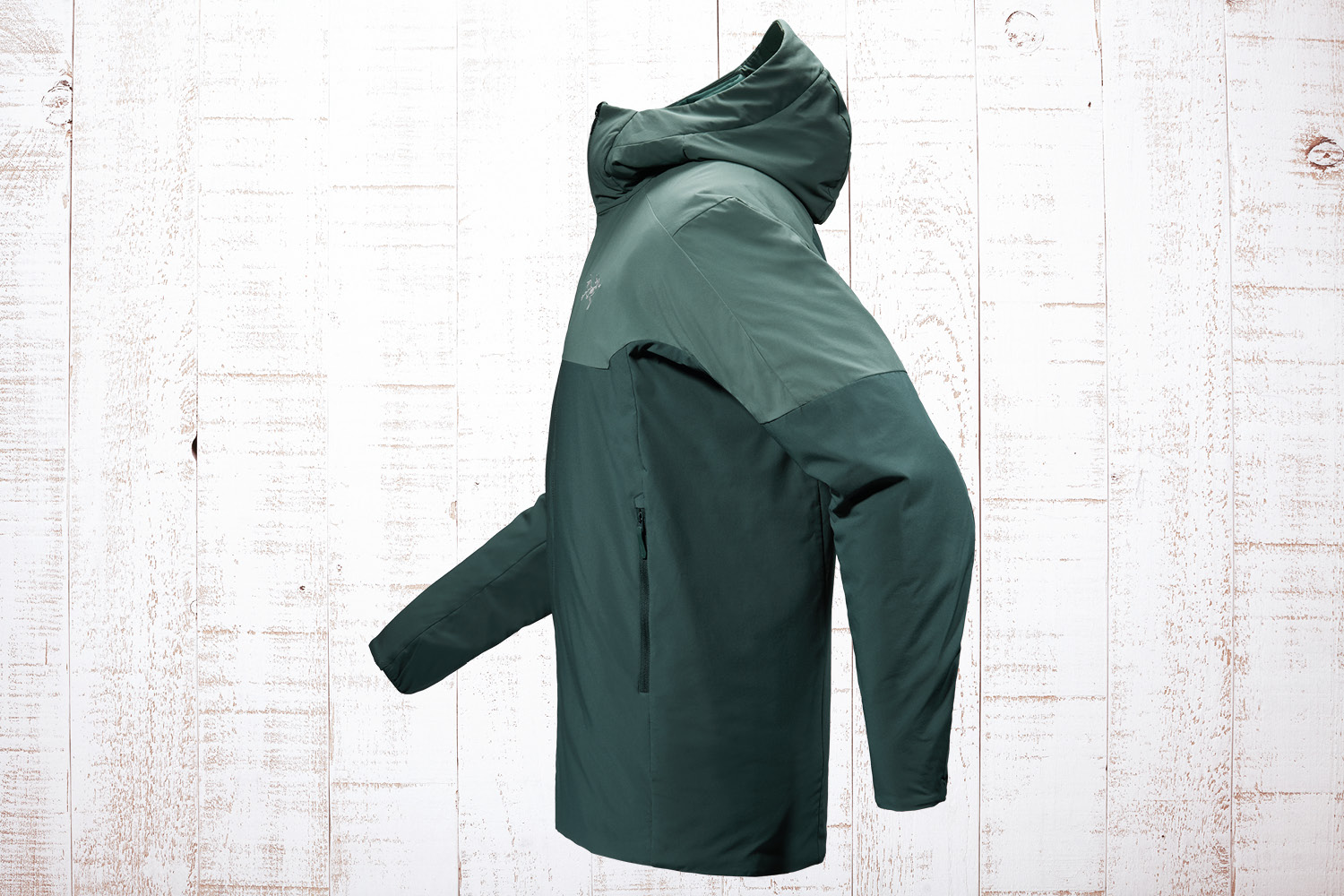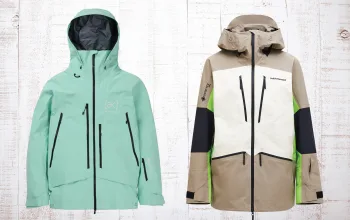- What makes the best ski mid layer?
- Smartwool Merino 250 Crew
- The North Face L3 Ventrix Hoodie
- Columbia Titan Pass Helix Half Zip
- Arc'teryx Men's Sabre Insulated Midlayer Hoody
- Helly Hansen Women’s Aurora Shield Fleece Jacket
- Patagonia F23 Nano-Air Hoody
- Rab Women's Syncrino Mid Fleece Hoody
- My Sunday Ski Contour Merino Mid-layer Top
- Black Diamond First Light Stretch Hoody
- Buyer's guide: What is a mid-layer anyway?
- How do you choose the best mid-layer for skiing?
- How do you choose the best mid-layer for skiing?
What makes the best ski mid layer?
For more on buying the best mid layer head down to our ski mid layer buyer's guide or read on for our pick of the best ski mid layers for the 2023 season.
Smartwool Merino 250 Crew
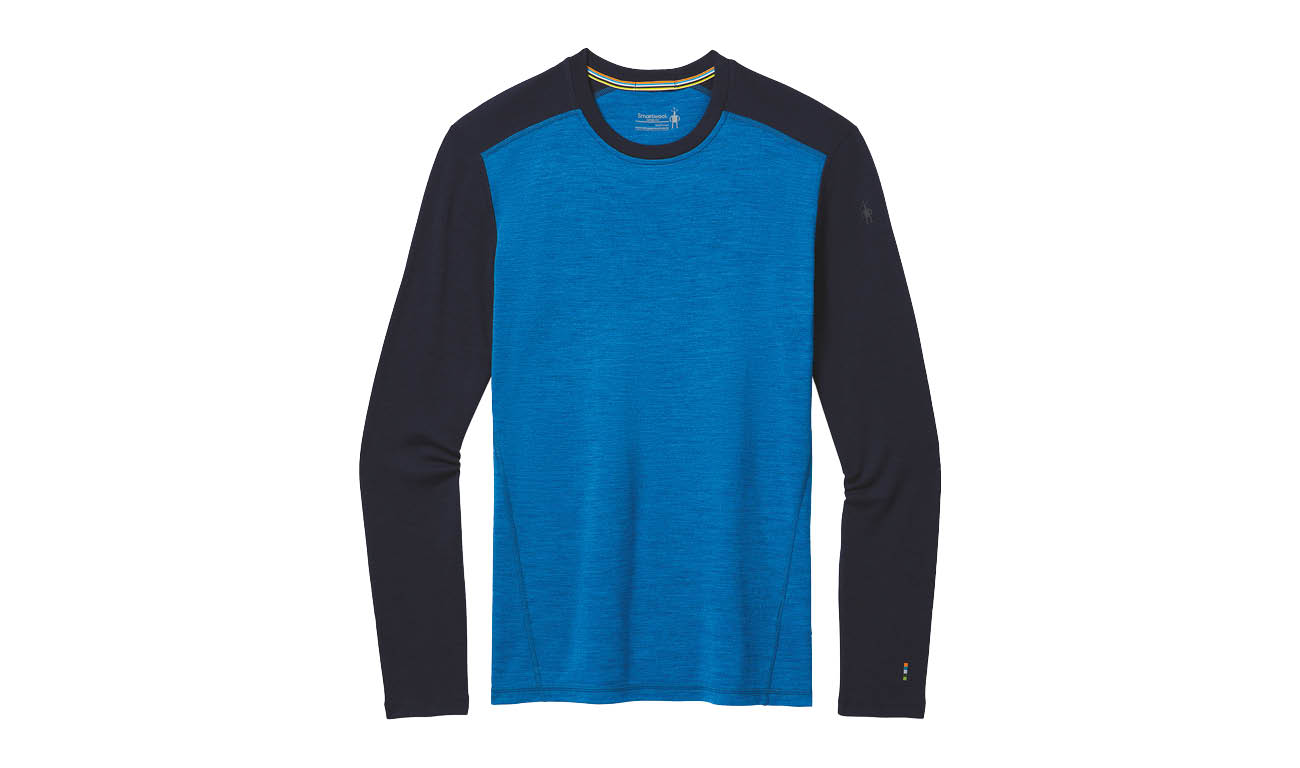
RRP: £100
Best for: Skiing in absolute comfort
Smartwool’s Merino 250 Crew has all the technical credentials required for a session on the slopes, but with its monochrome styling, it looks equally at home in your favourite slope-side apres-ski bar, too. The merino construction will keep you warm on the slopes while also offering fantastic sweat-wicking and great breathability – a major bonus given the unavoidable sweat-related odours associated with a day on the slopes. The benefits of the top’s flatlock seam construction shouldn’t be underestimated, either – it’s a design feature which minimises chafing, allowing for all-day comfort. We’re also huge fans of the innovative shoulder panel design, which adds extra padding where your backpack straps sit.
Buy Smartwool Merino 250 Crew: £99.99 at Smartwool
The North Face L3 Ventrix Hoodie
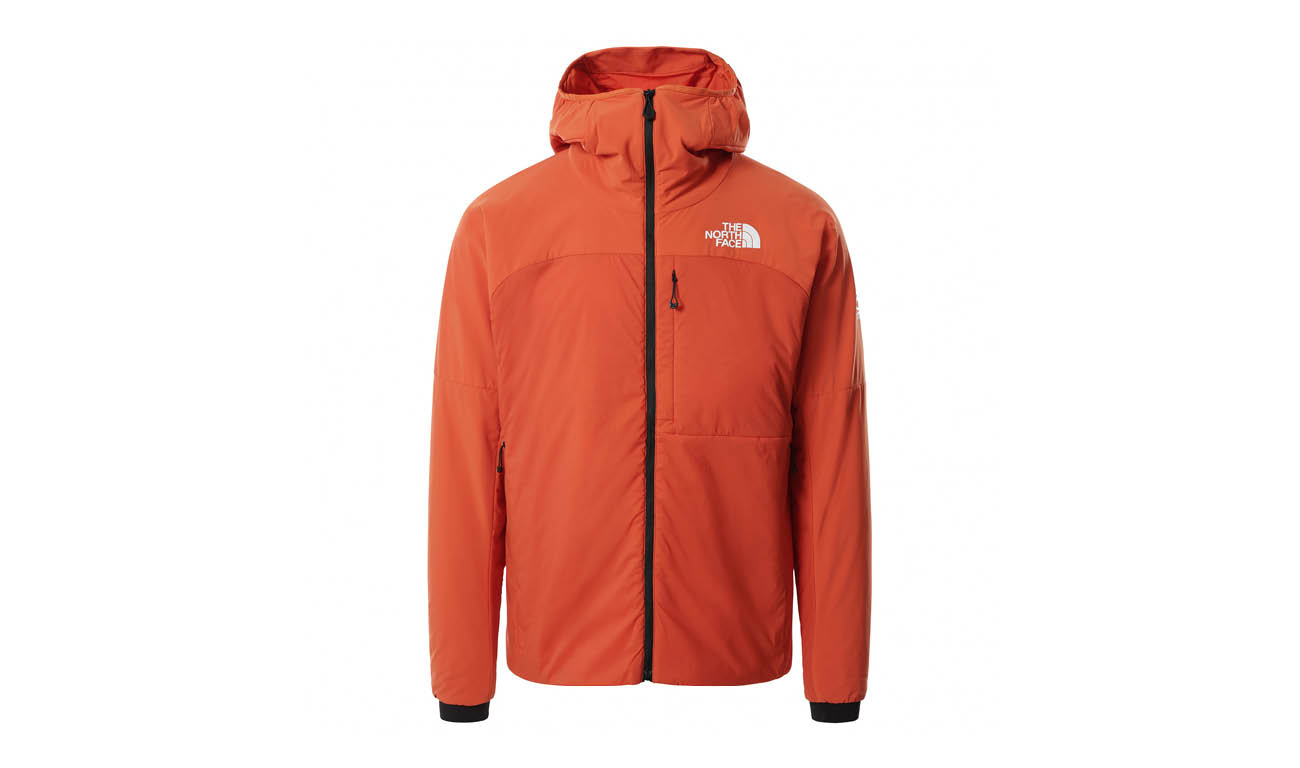
RRP: £245
Best for: Backcountry skiers and snowboarders looking for a jacket to protect them on both the ascent and descent.
The L3 Ventrix is designed for mountaineering while also doubling as the perfect mid-layer for backcountry skiers and snowboarders keen to stay warm without compromising on comfort. Ventrix technology brings active venting to the insulation in this jacket, making it highly breathable and helping you keep cool on cramped cable cars and on sunnier days. With 40g of insulation in the body and 25g in the hood and sleeves, this isn't the warmest insulated jacket but it’s designed for scenarios in which you're constantly on the move. This is precisely why there’s an abundance of space with this jacket. Freedom of movement is completely unimpeded, making the L3 Ventrix feel incredibly exceptionally comfortable, even when you're sweaty, hot and tired. The adjustable hood is highly functional but will be guaranteed to stay put, and the large zipped hand pockets are complimented by a spacious chest pocket with a mesh mobile phone sleeve.
Buy The North Face L3 Ventrix Hoodie: £245 at North Face
Columbia Titan Pass Helix Half Zip
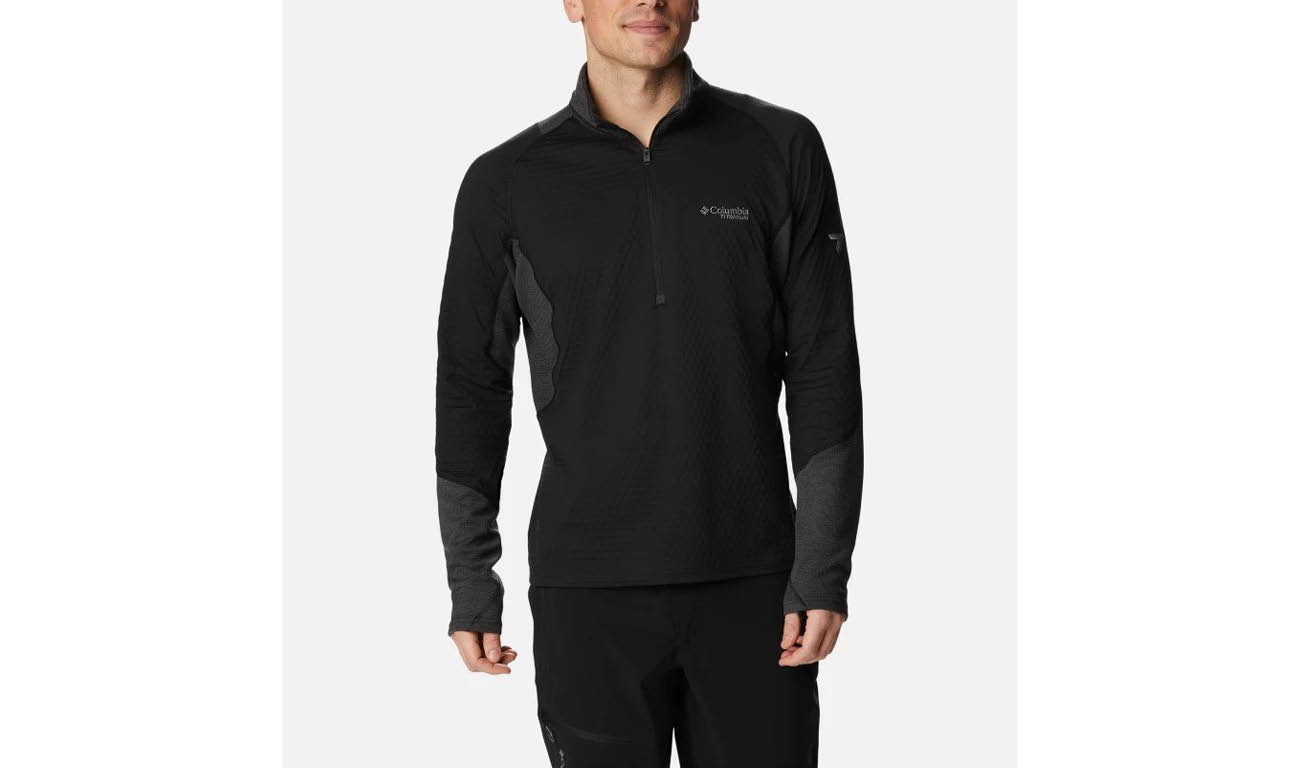
RRP: £80
Best for: Pairing with an insulated ski jacket or milder spring skiing
This bargain mid-layer is available in men's and women's fits and is perfect for long days on the pistes. It’s got a loose athletic fit, with plenty of coverage over the wrists and waist. The half zip lets heat escape quickly while also providing a decent barrier against chilly winds (bonus points for the chunky zipper, which is easy to grip with gloved hands). It also feels comfortable thanks to a soft, fleecy backing. Other notable features include Columbia’s Omni-Heat Helix, which relies on a hexagonal print pattern to provide an element of insulation by storing the body's heat, boosting the Titan Pass Helix’s credentials when it comes to heat retention (despite the apparently thinness of the material). In summary? A brilliant mid layer to pair with an insulated ski jacket, or to slip on during sun-soaked spring skiing sessions.
<DEAL>Buy Columbia Titan Pass Helix Full Zip Hoody: £50.00 at Columbia.co.uk
Buy Columbia Titan Pass Helix Half Zip: £36.14 at Amazon
Arc'teryx Men's Sabre Insulated Midlayer Hoody
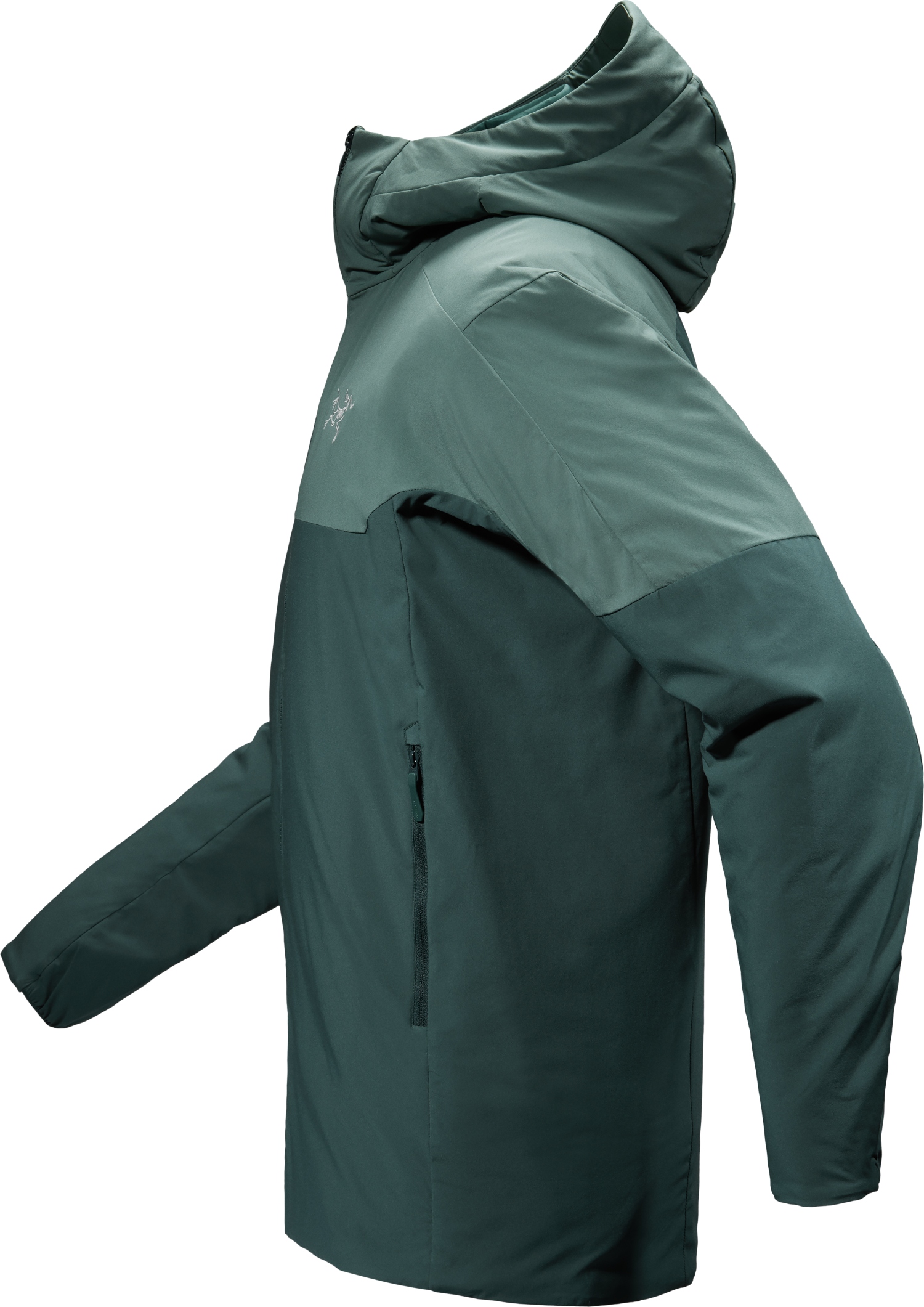
RRP: £300
Best for: Luxury
Breathability is the name of the game with this high end hoody, which has a rugged nylon plain weave and is filled with 100 percent recycled 80gsm Coreloft™M Continuous lightweight insulation. In layman’s terms, this is an insulation which will allow the movement of air, even when damp. A hood filled with the same high-performing insulation ensures you stay toasty without adding bulk to the garment, while the adjustable helmet-compatible StormHood design allows it to block pesky breezes without obscuring your view.
We were chuffed to see the presence of a small (but incredibly easily accessible) internal pocket in addition to the two larger external ones, and the embedded RECCO reflector provides extra peace of mind if you’re the kind of person who worries about the worst happening. That said, without sounding like a nagging parent, if you’re hitting back country trails we’re hoping we don’t need to remind you that nothing can substitute an avalanche transceiver in search and rescue situations.
Buy Arc'teryx Men's Sabre Insulated Midlayer Hoody: £350 at arcteryx.com
Helly Hansen Women’s Aurora Shield Fleece Jacket
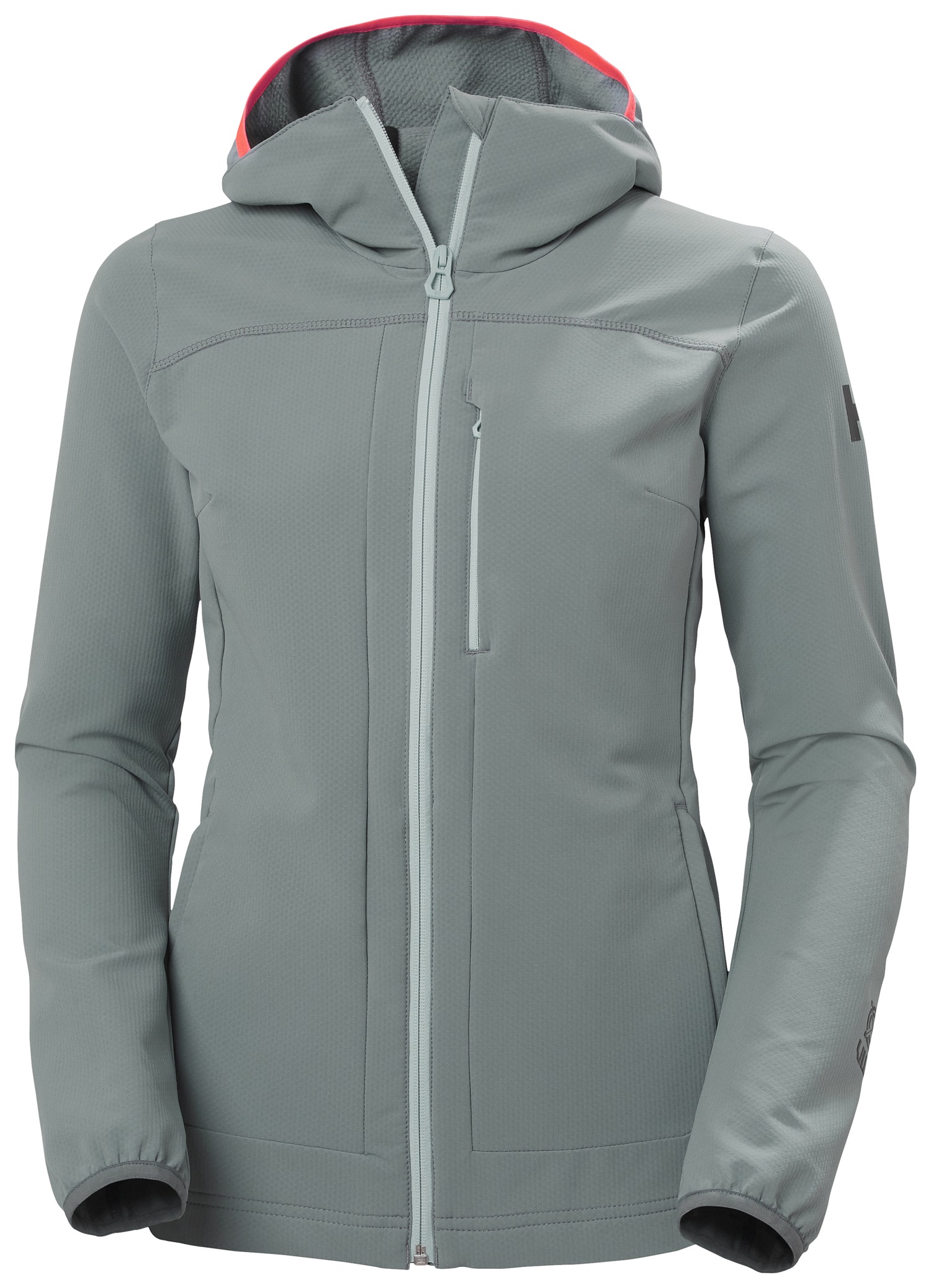
RRP: £140
Best for: All-day comfort
This garment has clearly been designed with comfort in mind. Our favourite bits include the ultra-comfortable fit (courtesy of the jacket’s four-way stretch) and the ultra-bright trim on the hood, which will prove handy for mates keen to keep track of you on cloudy days (or searching for you in a crowded apres-ski bar). It’s incredibly lightweight for a jacket which offers such brilliant resistance to rain and wind, thanks partly to the high collar (complete with a chin guard) and an elasticated hem, which cranks up the cosiness without adding bulk.
It’s not just the sense of roominess which makes this hoody incredibly comfortable to wear. All too often mid-layer jackets at this price point feel somewhat abrasive against the skin, but strategically-placed patches of softer material ensure this isn’t the case with the Aurora Shield.
Buy Helly Hansen Women’s Aurora Shield Fleece Jacket: £140 at Helly Hansen
Patagonia F23 Nano-Air Hoody
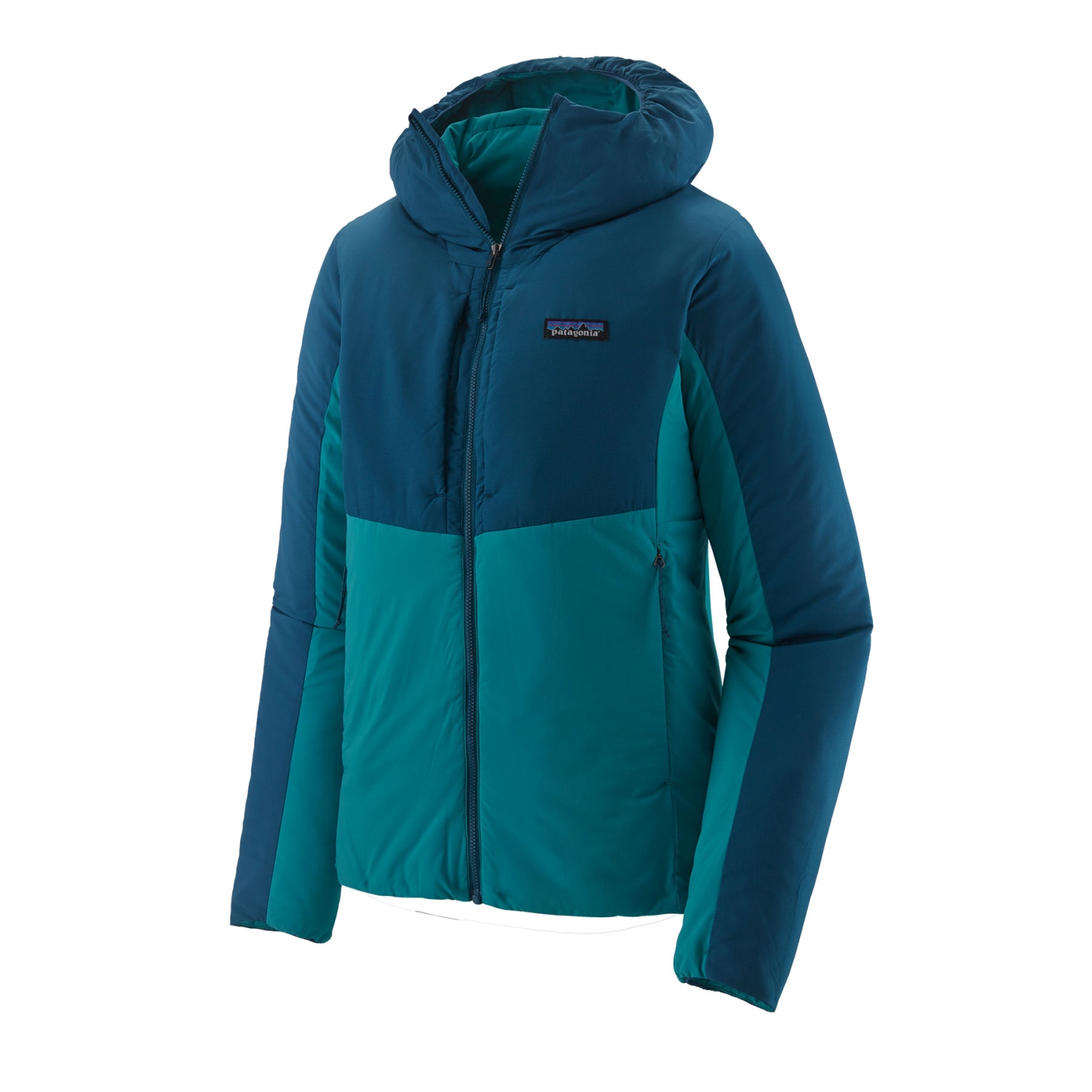
RRP: £290
Best for: Sustainability
Another mid-layer which comes with a higher-than-average price tag (albeit one we’re entirely happy to pay, in this case), the F23 Nano-Air Hoody is a hi-tech mid-layer which has clearly been a labour of love. No detail has been overlooked, especially on the sustainability front, whether it’s the recycled polyester plain weave shell, which has a PFC-free finish designed to minimise signs of wear and tear, the ultra-stretchy hood which can be easily removed, regardless of whether the jacket is zipped up or undone, or the snag-resistant cuffs which have just the right amount of give while also being easy to adjust and more than capable of keeping out moisture.
We also loved the abundance of pockets – there are two hand-warmer pockets and two at chest height. As for the insulation? Patagonia has used their trusty 60g FullRange polyester, which does a fantastic job of allowing air transfer while retaining heat. And, in a world where colourways seem to be increasingly limited, we were pleased to say a choice of four, too (we recommend the olive green).
Buy Patagonia F23 Nano-Air Hoody: £290 at eu.patagonia.com
Rab Women's Syncrino Mid Fleece Hoody
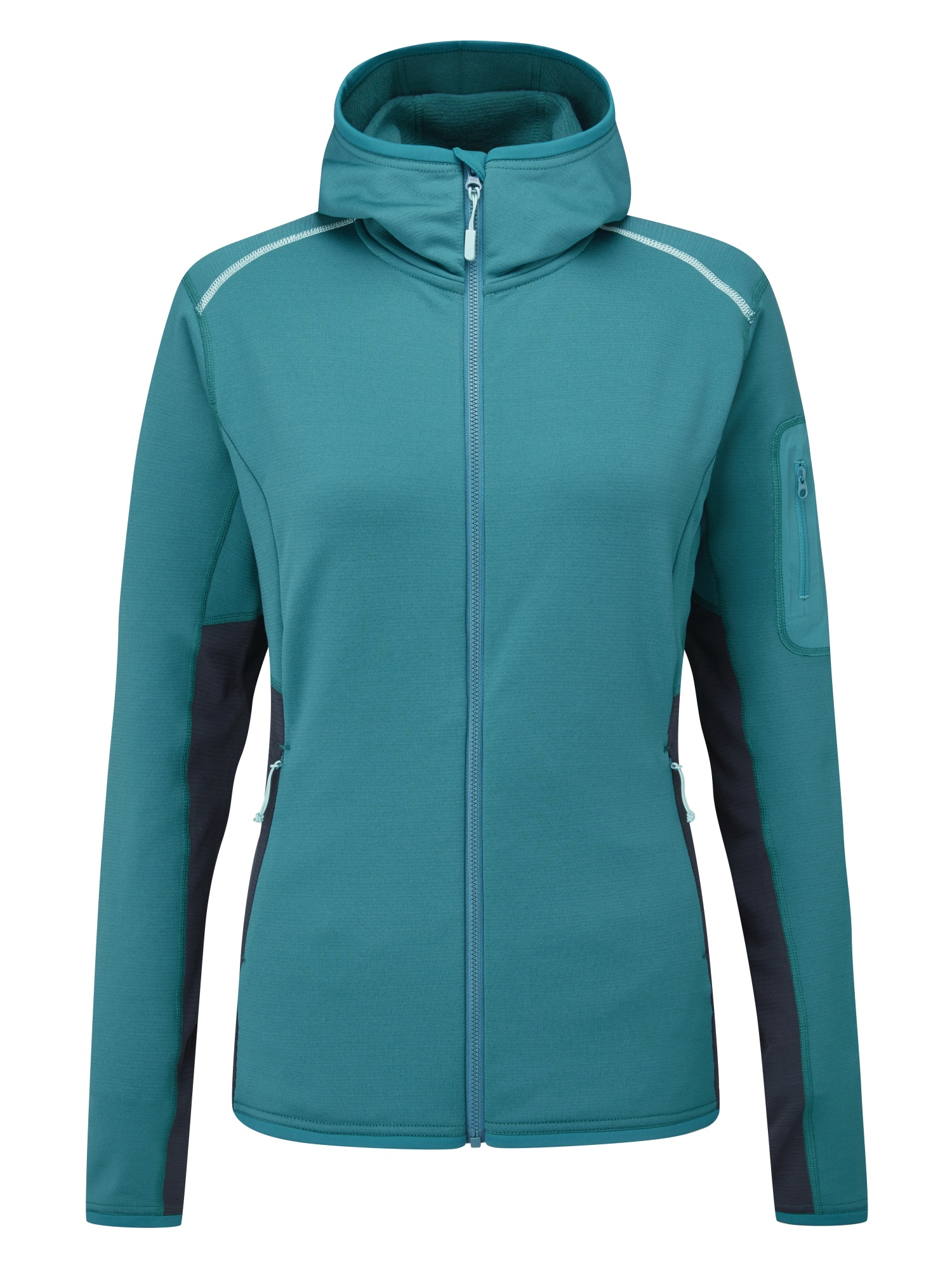
RRP: £160
Best for: Lightweight warmth
This highly technical mid-layer comes in at a wallet-friendly £160. It feels ridiculously soft, warm and roomy, despite its slimline profile. Brilliant sweat-wicking capabilities come courtesy of a fantastic double act of merino wool and synthetic fibres, while it’s clear that accessibility was also a priority for designers.
The pockets – one on the left arm and two hand warmer-style pockets – are perfectly positioned, and the front zip was wonderfully easily accessible, too. On cold, damp days, the built-in chin guard and storm flap will prove worth their weight in gold, as will the close-fitting hem and cuffs, which have just the right amount of give.
Buy Rab Women's Syncrino Mid Fleece Hoody: £180 at rab.equipment
My Sunday Ski Contour Merino Mid-layer Top
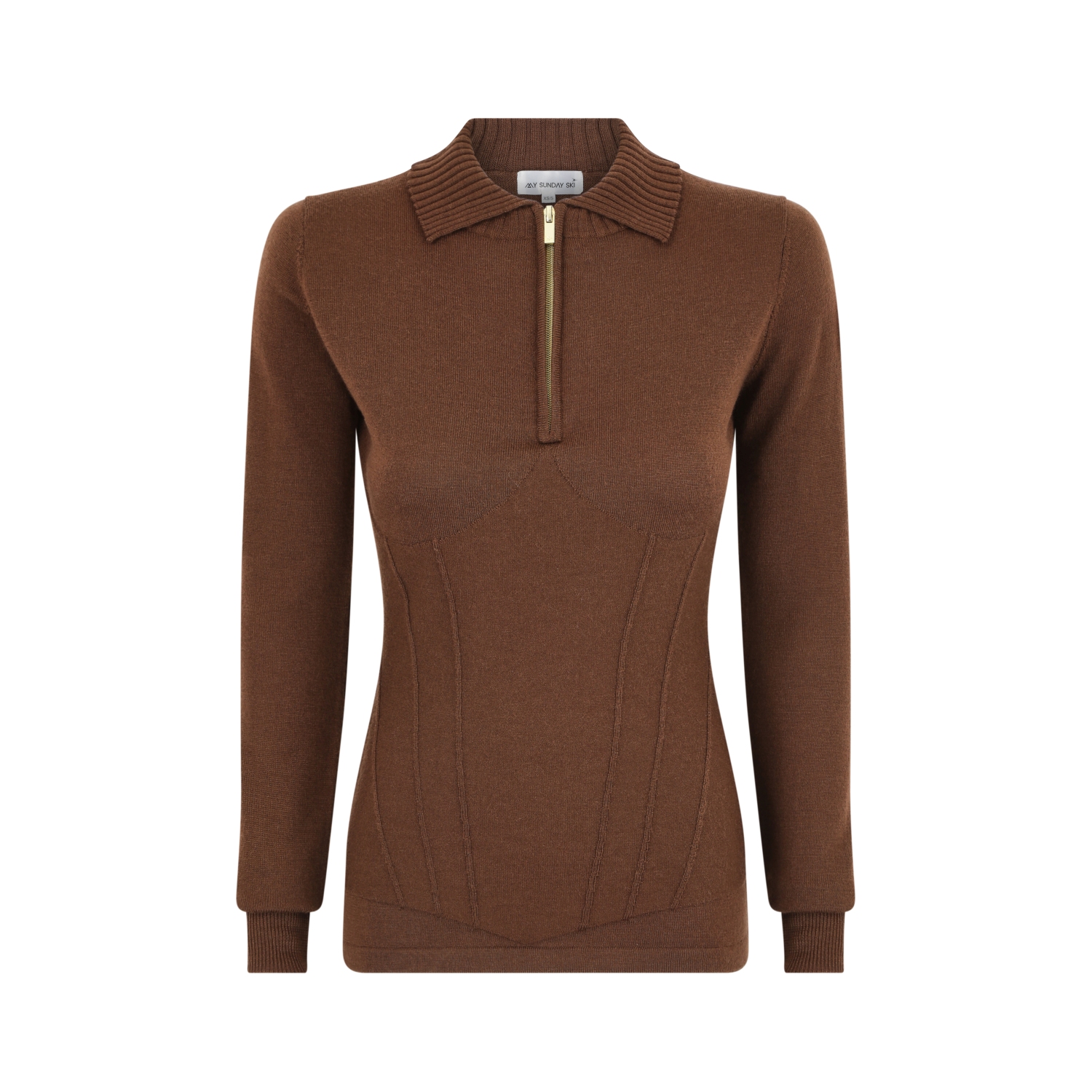
RRP: £110
Best for: Stylish skiers
This is a women’s technical top which will look just as good at the bar as it will on the slopes. It’s also fabulously comfortable, with a cashmere-like softness which comes courtesy of the generous use of merino wool. The raised contour hems are incredibly flattering (no matter how many raclettes you’ve indulged in), and we also loved the versatility of this top – unzip the quarter-length zip for a more casual look, or wear it fully zipped for a smarter approach (or when you’re keen to repel icy blasts of wind).
In summary, this is a gorgeous mid-layer which truly goes the distance. There’s plenty of substance as well as style when it comes to My Sunday Ski’s mid-layer, one example of which is the star-themed zip pull. Yes, it looks absolutely stunning but it’s also easy to grab with gloved hands.
Buy My Sunday Ski Contour Merino Mid-layer Top: £110 at mysundayski.co.uk
Black Diamond First Light Stretch Hoody
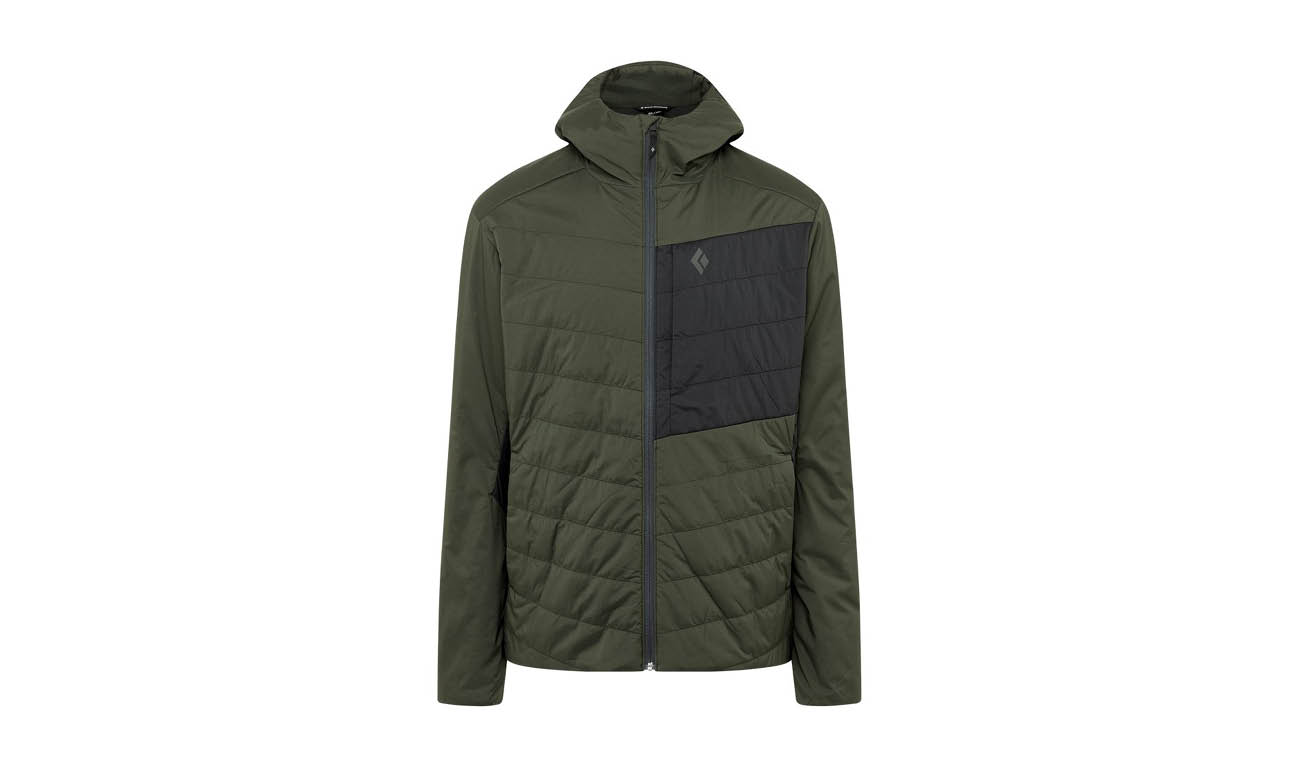
RRP: £220
Best for: A smart, minimalist mid layer jacket that gives great quality and versatility, if for a higher price point.
Black Diamond’s flagship mid layer is a lightweight, minimalist jacket ideally which works as a great mid-layer for all-mountain skiing. Primaloft Silver insulation combined with a water resistant Schoeller face fabric works a treat. Our one grip? We’d have loved to see a third pocket (ideally an internal one) in addition to the two external pockets, although this minimalistic approach has certainly helped to keep the garment’s weight down. It’s worth noting that the fit errs on the roomy side - we recommend going a size down.
BLACK DIAMOND FIRST LIGHT FULL REVIEW
Buy Black Diamond First Light Stretch Hoody: £213.22 at Amazon.co.uk
Buyer's guide: What is a mid-layer anyway?
As with any aerobic outdoors activity we always recommend embracing the layered approach when it comes to clothing for skiing and snowboarding. In other words, this means a good quality base layer (a long sleeve top or t-shirt) which is breathable and will quickly wick sweat away from the body. Next comes the mid-layer, which can be either a jacket or a top which can be worn alone or under a jacket. Mid-layers should allow wicked sweat to pass through while maintaining a steady core warmth in your body - not an easy job. The top layer is your outer shell - a ski jacket that protects you from wind, rain, and snow. Layering gives you the freedom to vary your layers throughout the day depending on the weather, while building up a wardrobe of garments with varying thickness means you’ll always have the ideal top, jacket or thermal base layer – whatever the weather.
How do you choose the best mid-layer for skiing?
Most ski mid-layers, whether technical fleeces or lightweight mid-layer jackets, have a slender fill of insulation. In a fleece this would equate to either a 100 or 200 weight, while in a synthetic insulation mid-layer you're looking at around 40-60g of fill.
We recommend avoiding down for mid-layers, simply because when it gets wet the fibres clump together, which inadvertently allows it to trap. This renders its insulating qualities useless – which is precisely why most of the mid-layers we tested and reviewed for Snow Magazine have a fill of synthetic insulation or are made from fleece.
Both the insulation and wrapping materials should be wicking - pulls sweat away from the body, and breathable - allows moisture to pass through the material to the outer skin to be evaporated away. Fleece is naturally good at both, and there are now excellent synthetic fills that come close to mimicking the warmth-to-weight ratio of down without any of the downsides. Finally, ensure that your mid-layer offers freedom of movement. The main areas of concern are the lower torso and shoulders/arms. Key features to look for include stretch panels and articulated stitching. We suggest prioritising the latter over a loose fit if freedom of movement is a concern, simply because the looser the fit the less effective the insulation will be.
As with any aerobic outdoors activity we always recommend embracing the layered approach when it comes to clothing for skiing and snowboarding. In other words, this means a good quality base layer (a long sleeve top or t-shirt) which is breathable and will quickly wick sweat away from the body. Next comes the mid-layer, which can be either a jacket or a top which can be worn alone or under a jacket. Mid-layers should allow wicked sweat to pass through while maintaining a steady core warmth in your body - not an easy job. The top layer is your outer shell - a ski jacket that protects you from wind, rain, and snow. Layering gives you the freedom to vary your layers throughout the day depending on the weather, while building up a wardrobe of garments with varying thickness means you’ll always have the ideal top, jacket or thermal base layer – whatever the weather.
How do you choose the best mid-layer for skiing?
Most ski mid-layers, whether technical fleeces or lightweight mid-layer jackets, have a slender fill of insulation. In a fleece this would equate to either a 100 or 200 weight, while in a synthetic insulation mid-layer you're looking at around 40-60g of fill.
We recommend avoiding down for mid-layers, simply because when it gets wet the fibres clump together, which inadvertently allows it to trap. This renders its insulating qualities useless – which is precisely why most of the mid-layers we tested and reviewed for Snow Magazine have a fill of synthetic insulation or are made from fleece.
Both the insulation and wrapping materials should be wicking - pulls sweat away from the body, and breathable - allows moisture to pass through the material to the outer skin to be evaporated away. Fleece is naturally good at both, and there are now excellent synthetic fills that come close to mimicking the warmth-to-weight ratio of down without any of the downsides. Finally, ensure that your mid-layer offers freedom of movement. The main areas of concern are the lower torso and shoulders/arms. Key features to look for include stretch panels and articulated stitching. We suggest prioritising the latter over a loose fit if freedom of movement is a concern, simply because the looser the fit the less effective the insulation will be.



